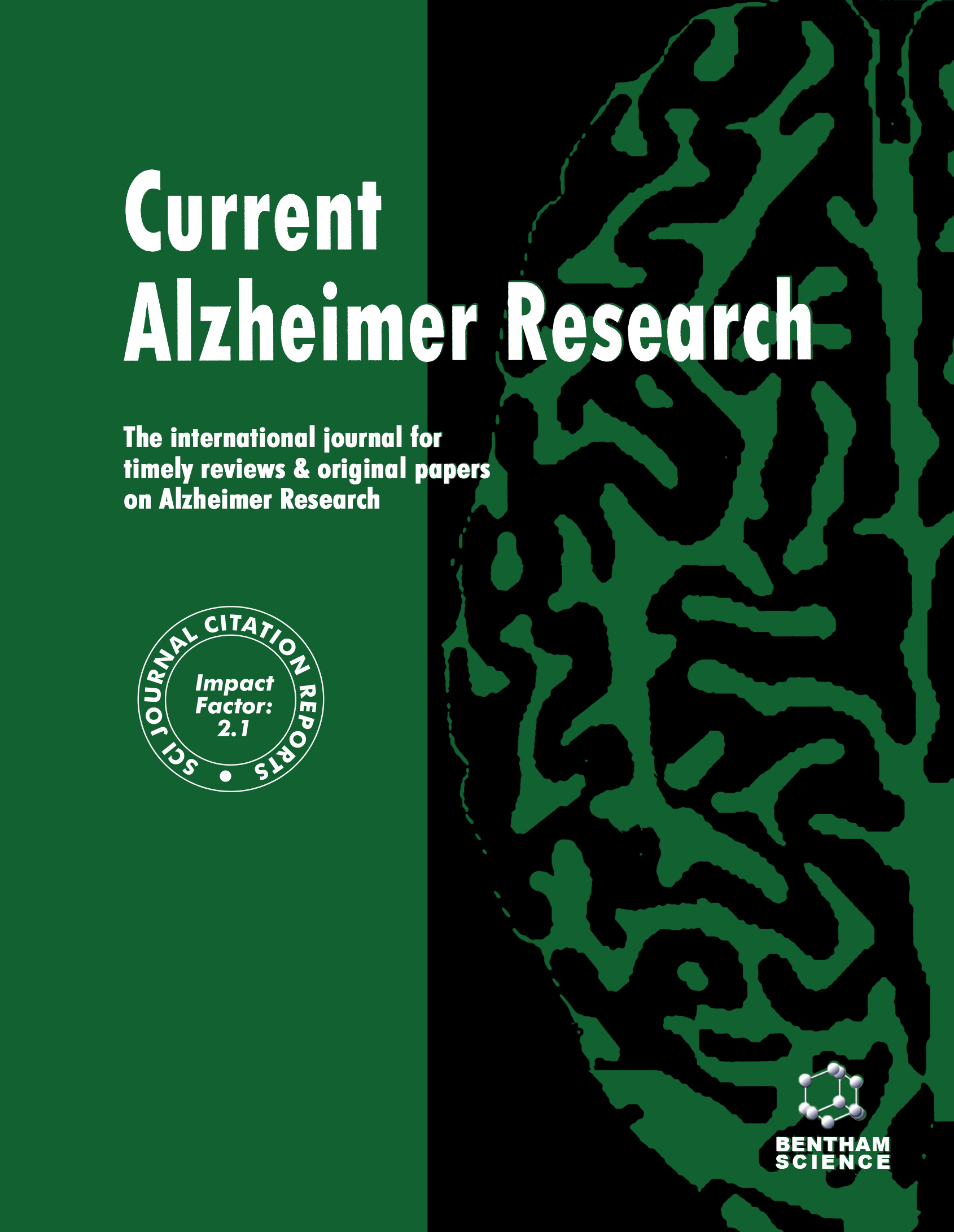- Home
- A-Z Publications
- Current Alzheimer Research
- Previous Issues
- Volume 19, Issue 12, 2022
Current Alzheimer Research - Volume 19, Issue 12, 2022
Volume 19, Issue 12, 2022
-
-
Triplication of Synaptojanin 1 in Alzheimer’s Disease Pathology in Down Syndrome
More LessAuthors: Robert Hwang Jr., Lam-Ha Dang, Jacinda Chen, Joseph H. Lee and Catherine MarquerDown Syndrome (DS), caused by triplication of human chromosome 21 (Hsa21) is the most common form of intellectual disability worldwide. Recent progress in healthcare has resulted in a dramatic increase in the lifespan of individuals with DS. Unfortunately, most will develop Alzheimer’s disease like dementia (DS-AD) as they age. Understanding similarities and differences between DSAD and the other forms of the disease Read More
-
-
-
The Gut Microbiome and Alzheimer’s Disease: A Growing Relationship
More LessEvidence that the gut microbiota plays a key role in the pathogenesis of Alzheimer’s disease is already unravelling. The microbiota-gut-brain axis is a bidirectional communication system that is not fully understood but includes neural, immune, endocrine, and metabolic pathways. The progression of Alzheimer’s disease is supported by mechanisms related to the imbalance in the gut microbiota and the development of Read More
-
-
-
GIRK2 Channels in Down Syndrome and Alzheimer’s Disease
More LessCognitive impairment in Down syndrome (DS) results from the abnormal expression of hundreds of genes. However, the impact of KCNJ6, a gene located in the middle of the ‘Down syndrome critical region’ of chromosome 21, seems to stand out. KCNJ6 encodes GIRK2 (KIR3.2) subunits of G protein-gated inwardly rectifying potassium channels, which serve as effectors for GABAB, m2, 5HT1A, A1, and many other postsynaptic Read More
-
-
-
High-Intense Interval Training Prevents Cognitive Impairment and Increases the Expression of Muscle Genes FNDC5 and PPARGC1A in a Rat Model of Alzheimer's Disease
More LessBackground: Alzheimer's disease is the most common neurodegenerative disease in the world, characterized by the progressive loss of neuronal structure and function, whose main histopathological landmark is the accumulation of β-amyloid in the brain. Objective: It is well known that exercise is a neuroprotective factor and that muscles produce and release myokines that exert endocrine effects in inflammation and m Read More
-
-
-
Serum Sirtuin-1, HMGB1-TLR4, NF-KB and IL-6 Levels in Alzheimer’s: The Relation Between Neuroinflammatory Pathway and Severity of Dementia
More LessAlzheimer's disease (AD), which affects the world's aging population, is a progressive neurodegenerative disease requiring markers or tools to accurately and easily diagnose and monitor the process. Objective: In this study, serum Sirtuin-1(SIRT-1), High Mobility Group Box 1 (HMGB1), Toll-Like Receptor-4 (TLR4), Nuclear Factor Kappa B (NF-kB), Interleukin-6 (IL-6), Amyloid βeta-42 (Aβ- 42), and p-tau181 levels in patients di Read More
-
Volumes & issues
-
Volume 21 (2024)
-
Volume 20 (2023)
-
Volume 19 (2022)
-
Volume 18 (2021)
-
Volume 17 (2020)
-
Volume 16 (2019)
-
Volume 15 (2018)
-
Volume 14 (2017)
-
Volume 13 (2016)
-
Volume 12 (2015)
-
Volume 11 (2014)
-
Volume 10 (2013)
-
Volume 9 (2012)
-
Volume 8 (2011)
-
Volume 7 (2010)
-
Volume 6 (2009)
-
Volume 5 (2008)
-
Volume 4 (2007)
-
Volume 3 (2006)
-
Volume 2 (2005)
-
Volume 1 (2004)
Most Read This Month
Article
content/journals/car
Journal
10
5
false
en

Most Cited Most Cited RSS feed
-
-
Cognitive Reserve in Aging
Authors: A. M. Tucker and Y. Stern
-
- More Less

